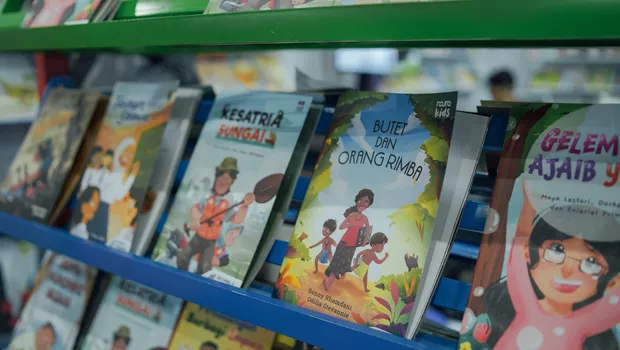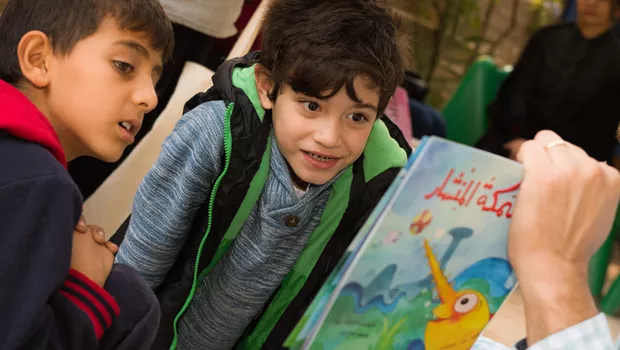Tung... tung... tung. The sound of the drum rings across the room, signaling break time. Scurrying from their desks, students run to their favorite place in school: the library. Some race to bookshelves, while others dart to the librarian asking for check-out tickets to take books home.
This bright and colorful space looks just like a Room to Read library. The books are categorized into reading levels, the check-out system is early grade-friendly, and the corners feature book introductions, creative activities, and reference materials.
The only difference is this library wasn’t established by Room to Read. Rather, it’s a replica library – one of 32 in Vinh Long province and 255 throughout eight regions of Vietnam. All of these libraries were created by the country's Department of Education & Training, increasing access to quality reading materials based off of Room to Read’s model.
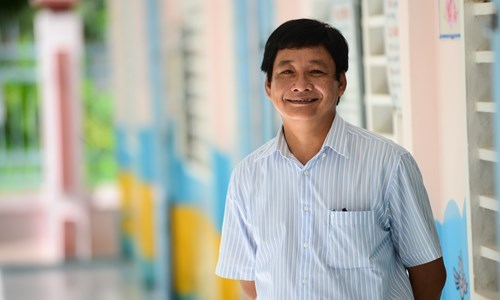
Building Trust with Local Governments
In 2010, Room to Read began working with the Vinh Long government, school, and community to set up the province's first 13 libraries. Before this time, very few of the 199 local primary schools had a standard library.
“The facilities were very poor and there was no concrete guidance on how to create a library. But that was not the key challenge. Low awareness of the importance of books from the teachers and community was,” says Quoc Nguyen, Vinh Long Department of Education and Training’s officer and leader of the project.
Around this time, the government also began establishing their own libraries. However, the reading materials looked quite different.
“The key to making a library an attractive place is the source of books. However, in the government’s book list, there were no picture books or storybooks for children,” says Quoc.
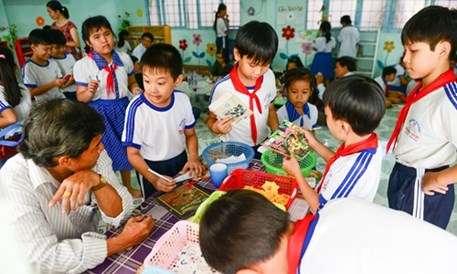
This contrast hints at why students in Room to Read libraries check out an average of 11-12 books per year. Due to these impressive results, Quoc sought to make Room to Read’s library model the standard for all primary schools in the province.
However, implementing this model across eight regions was hardly easy. To roll it out, he used the information Room to Read provided to train all board members across participating schools. Over the course of five years, all involved learned how to run an effective, engaging library.
Revamping Local Libraries
Incredibly resourceful, the staff at one of the participating schools, Truong Van Ba Primary, created their library with a minimal budget. Teachers made bookshelves from the old tables. The local art teacher made paint to color-coordinate the reading level shelves and parents gifted tree pots.
“It was so impressive to see our teachers and parents work together to establish this library. Without hesitation, the teachers sacrificed their break time to cover all of the tasks,” said Hong Nguyen, principal at Truong Van Ba Primary School.
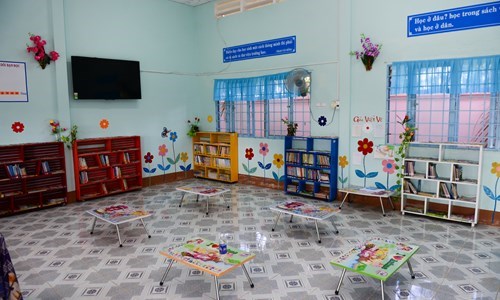
The library’s position was also changed from the corner of the school to a more central location, attracting more students. Staff also began heavily emphasizing the importance of storybooks in parent meetings and encouraged mothers and fathers to visit the library and tell others what they had seen.
“The library is the most visited place by students. Our library might not be as perfect as the libraries officially supported by Room to Read, but this has been a great achievement of our school. Every time I see the children visiting the library, I always feel like all the efforts of the teachers and parents were well rewarded,” says Hong.
Future of Replica Libraries
Given the strong relationship between Room to Read and the local government, the future of replica libraries looks promising. According to the agreement signed between Room to Read and the Ministry of Education and Training, starting in 2017 for every four libraries established by Room to Read, the provincial department of Education & Training will create one replica library.
This partnership is just one example of how Room to Read's Literacy Program can truly lead to country-wide systemic change. Want to help our Literacy Program reach more places around the world? Support our work here!
Invest in children's education today.
$50 can support a child in learning to read and write for a year.


